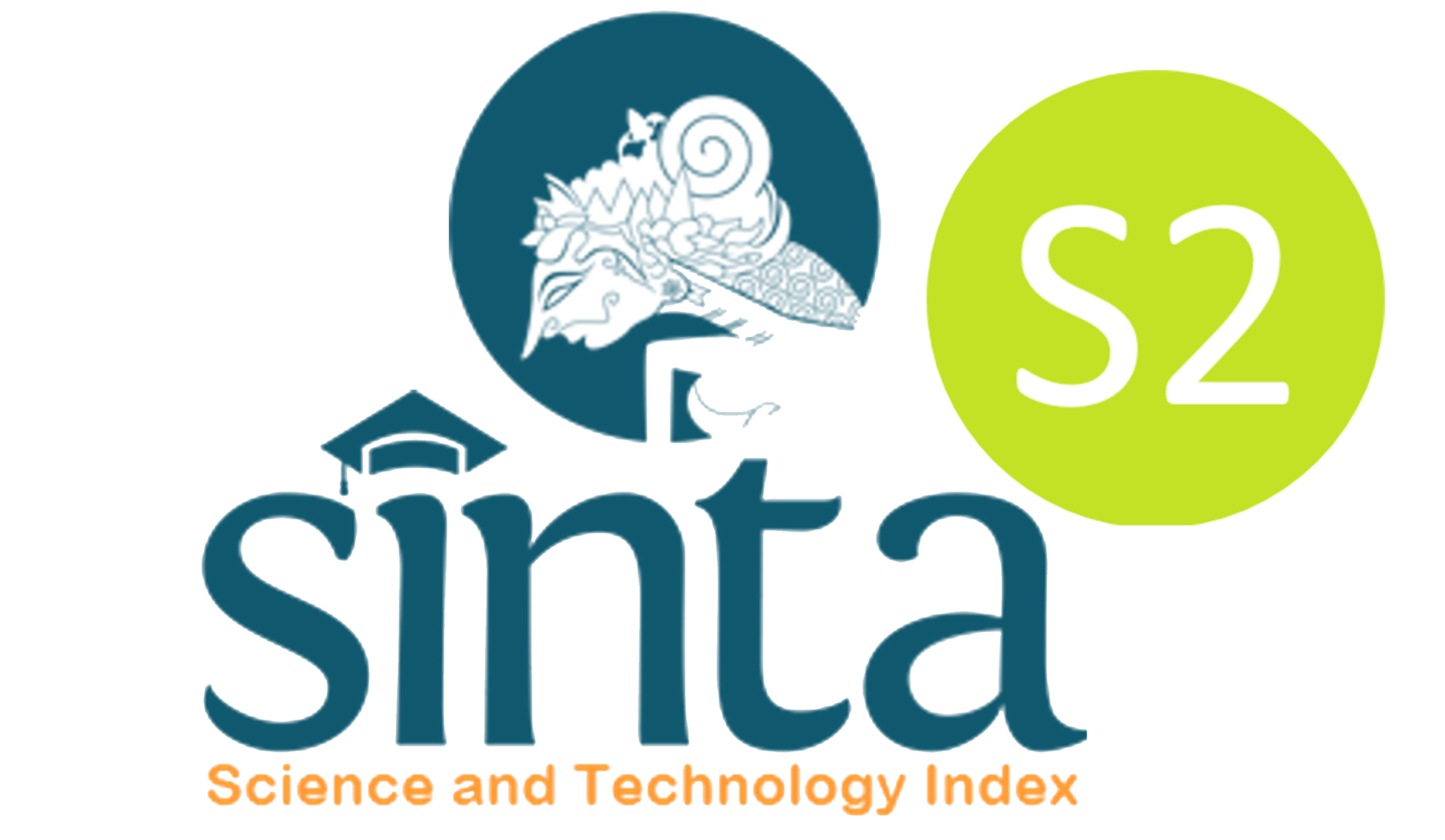Enhancing Accuracy by Using Boosting and Stacking Techniques on the Random Forest Algorithm on Data from Social Media X
Teri Ade Putra(1*); Vicky Ariandi(2); Sarjon Defit(3);
(1) Universitas Putra Indonesia YPTK Padang
(2) Universitas Putra Indonesia YPTK Padang
(3) Universitas Putra Indonesia YPTK Padang
(*) Corresponding Author
AbstractOnline loans (commonly referred to as Pinjol) have become a widespread phenomenon in Indonesia, both in legal and illegal forms. It is undeniable that this is in line with the rapid development and innovation of technology. Pinjol cannot be separated from public comments, both positive and negative, on social media X. The study examined the communication patterns of Indonesian people using a sentiment analysis approach. The research utilized the Random Forest algorithm to perform sentient analysis. This algorithm combined the output of several decision trees to achieve a more accurate result. In addition to using a random forest algorithm, this study also made improvements by using stacking and boosting. The results of this study indicated that the highest accuracy of 86% was obtained by the SMOTE+RF+Adaboost (Boosting) model. In contrast, the lowest accuracy of 60% was obtained in the RF+Adaboost model with a stacking technique. KeywordsBoosting; Random Forest; SMOTE; Social Media X; Stacking
|
Full Text:PDF |
Article MetricsAbstract view: 77 timesPDF view: 49 times |
Digital Object Identifier https://doi.org/10.33096/ilkom.v16i2.2058.184-189 https://doi.org/10.33096/ilkom.v16i2.2058.184-189
|
Cite |
References
L. C. Maretva and A. Wibowo, “Perbandingan Metode Ensemble Learning pada Klasifikasi Penyakit Diabetes,” Jurnal Masyarakat Informatika, vol. 13, no. 1, pp. 33–44, 2022, doi: 10.14710/jmasif.13.1.42912.
Y. Pristyanto, “Penerapan Metode Ensemble Untuk Meningkatkan Kinerja Algoritme Klasifikasi Pada Imbalanced Dataset,” Jurnal TEKNOINFO, vol. 13, no. 1, pp. 11–16, 2019, doi: 10.33365/jti.v13i1.184.
Y. M. Awaludin and F. Budiman, “Optimasi Analisis Kesuburan Tanah Dengan Pendekatan Soft Voting Ensemble,” Jurnal SIMETRIS, vol. 14, no. 2, pp. 261–275, 2023, doi: 10.24176/simet.v14i2.11285.
A. K. Putri and H. Suparwito, “Uji Algoritma Stacking Ensemble Classifier pada Kemampuan Adaptasi Mahasiswa Baru dalam Pembelajaran Online,” KONSTELASI: Konvergensi Teknologi dan Sistem Informasi, vol. 3, no. 1, pp. 1–12, 2023.
S. Wijayanti and Hartiningrum, “Dampak Aplikasi Pinjaman Online Terhadap Kebutuhan Dan Gaya Hidup Konsumtif Buruh Pabrik,” Mizania: Jurnal Ekonomi dan Akuntansi, vol. 2, no. 2, pp. 230–235, 2022, doi: 10.47776/mizania.v2i2.592.
J. Z. Y. Arvante, “Dampak Permasalahan Pinjaman Online dan Perlindungan Hukum Bagi Konsumen Pinjaman Online,” Ikatan Penulis Mahasiswa Hukum Indonesia Law Journal, vol. 2, no. 1, pp. 73–87, Feb. 2022, doi: 10.15294/ipmhi.v2i1.53736.
A. Priyonggojati, “Perlindungan Hukum Terhadap Penerima Pinjaman Dalam Penyelenggaraan Financial Technology Berbasis Peer To Peer Lending,” Jurnal Usm Law Review, vol. 2, no. 2, p. 162, Nov. 2019, doi: 10.26623/julr.v2i2.2268.
Y. Setiawan, J. Jondri, and W. Astuti, “Twitter Sentiment Analysis on Online Transportation in Indonesia Using Ensemble Stacking,” Jurnal Media Informatika Budidarma, vol. 6, no. 3, pp. 1452–1458, Jul. 2022, doi: 10.30865/mib.v6i3.4359.
R. Jayapermana, A. Aradea, and N. I. Kurniati, “Implementation of Stacking Ensemble Classifier for Multi-class Classification of COVID-19 Vaccines Topics on Twitter,” Scientific Journal of Informatics, vol. 9, no. 1, pp. 8–15, May 2022, doi: 10.15294/sji.v9i1.31648.
H. N. Cahyani and R. Arifudin, “Improving the Accuracy of Multinomial Naïve-Bayes Algorithm with Adaptive Boosting Using Information Gain for Classification of Movie Reviews Sentiment Analysis,” Journal of Advances in Information Systems and Technology, vol. 4, no. 1, 2022, doi: 10.15294/jaist.v4i1.60267.
S. M. Ganie, P. K. D. Pramanik, M. Bashir Malik, S. Mallik, and H. Qin, “An ensemble learning approach for diabetes prediction using boosting techniques,” Front Genet, vol. 14, pp. 1–15, 2023, doi: 10.3389/fgene.2023.1252159.
M. K. Anam, M. I. Mahendra, W. Agustin, Rahmaddeni, and Nurjayadi, “Framework for Analyzing Netizen Opinions on BPJS Using Sentiment Analysis and Social Network Analysis (SNA),” Intensif, vol. 6, no. 1, pp. 2549–6824, 2022, doi: 10.29407/intensif.v6i1.15870.
N. Chamidah, M. M. Santoni, and N. Matondang, “Pengaruh Oversampling pada Klasifikasi Hipertensi dengan Algoritma Naïve Bayes, Decision Tree, dan Artificial Neural Network (ANN),” JURNAL RESTI (Rekayasa Sistem dan Teknologi Informasi), vol. 4, no. 4, pp. 635–641, 2020, doi: 10.29207/resti.v4i4.2015.
E. Erlin, Y. Desnelita, N. Nasution, L. Suryati, and F. Zoromi, “Dampak SMOTE terhadap Kinerja Random Forest Classifier berdasarkan Data Tidak seimbang,” MATRIK : Jurnal Manajemen, Teknik Informatika dan Rekayasa Komputer, vol. 21, no. 3, pp. 677–690, Jul. 2022, doi: 10.30812/matrik.v21i3.1726.
M. K. Anam et al., “Sentiment Analysis for Online Learning using The Lexicon-Based Method and The Support Vector Machine Algorithm,” ILKOM Jurnal Ilmiah, vol. 15, no. 2, pp. 290–302, 2023, doi: 10.33096/ilkom.v15i2.1590.290-302.
S. Rabbani, D. Safitri, N. Rahmadhani, A. A. F. Sani, and M. K. Anam, “Perbandingan Evaluasi Kernel SVM untuk Klasifikasi Sentimen dalam Analisis Kenaikan Harga BBM,” MALCOM: Indonesian Journal of Machine Learning and Computer Science, vol. 3, no. 2, pp. 153–160, Oct. 2023, doi: 10.57152/malcom.v3i2.897.
M. K. Anam, Rahmaddeni, M. B. Firdaus, H. Asnal, and Hamdani, “Sentiment Analysis to analyze Vaccine Enthusiasm in Indonesia on Twitter Social Media,” JAIA – Journal Of Artificial Intelligence And Applications, vol. 1, no. 2, pp. 23–27, 2021.
A. N. Ulfah and M. K. Anam, “Analisis Sentimen Hate Speech Pada Portal Berita Online Menggunakan Support Vector Machine (SVM),” JATISI (Jurnal Teknik Informatika dan Sistem Informasi), vol. 7, no. 1, pp. 1–10, 2020, doi: 10.35957/jatisi.v7i1.196.
R. S. Putra, W. Agustin, M. K. Anam, L. Lusiana, and S. Yaakub, “The Application of Naïve Bayes Classifier Based Feature Selection on Analysis of Online Learning Sentiment in Online Media,” Jurnal Transformatika, vol. 20, no. 1, p. 44, Jul. 2022, doi: 10.26623/transformatika.v20i1.5144.
H. A. Putranto, O. Setyawati, and Wijono, “Pengaruh Phrase Detection dengan POS-Tagger terhadap Akurasi Klasifikasi Sentimen menggunakan SVM,” JNTETI, vol. 5, no. 4, pp. 252–259, 2016.
A. N. Ulfah, M. K. Anam, N. Y. S. Munti, S. Yaakub, and M. B. Firdaus, “Sentiment Analysis of the Convict Assimilation Program on Handling Covid-19,” JUITA: Jurnal Informatika, vol. 10, no. 2, pp. 209–216, 2022, doi: 10.30595/juita.v10i2.12308.
R. Latifah, E. S. Wulandari, and P. E. Kreshna, “Model Decision Tree untuk Prediksi Jadwal Kerja menggunakan Scikit-Learn,” in Seminar Nasional Sains dan Teknologi, 2019, pp. 1–6.
C. H. Yutika, A. Adiwijaya, and S. Al Faraby, “Analisis Sentimen Berbasis Aspek pada Review Female Daily Menggunakan TF-IDF dan Naïve Bayes,” Jurnal Media Informatika Budidarma, vol. 5, no. 2, p. 422, Apr. 2021, doi: 10.30865/mib.v5i2.2845.
V. Talasila, M. V Mohan, and N. M. R, “Enhancing Text-to-Image Synthesis with an Improved Semi-Supervised Image Generation Model Incorporating N-Gram, Enhanced TF-IDF, and BOW Techniques,” International Journal of Intelligent Systems and Applications in Engineering, vol. 11, no. 7s, pp. 381–397, 2023.
R. Kaur and V. Bhardwaj, “Gurmukhi Text Emotion Classification System using TF-IDF and N-gram Feature Set Reduced using APSO,” International Journal on Emerging Technologies, vol. 10, no. 3, pp. 352–362, 2019.
Refbacks
- There are currently no refbacks.
Copyright (c) 2024 Teri Ade Putra

This work is licensed under a Creative Commons Attribution-ShareAlike 4.0 International License.










